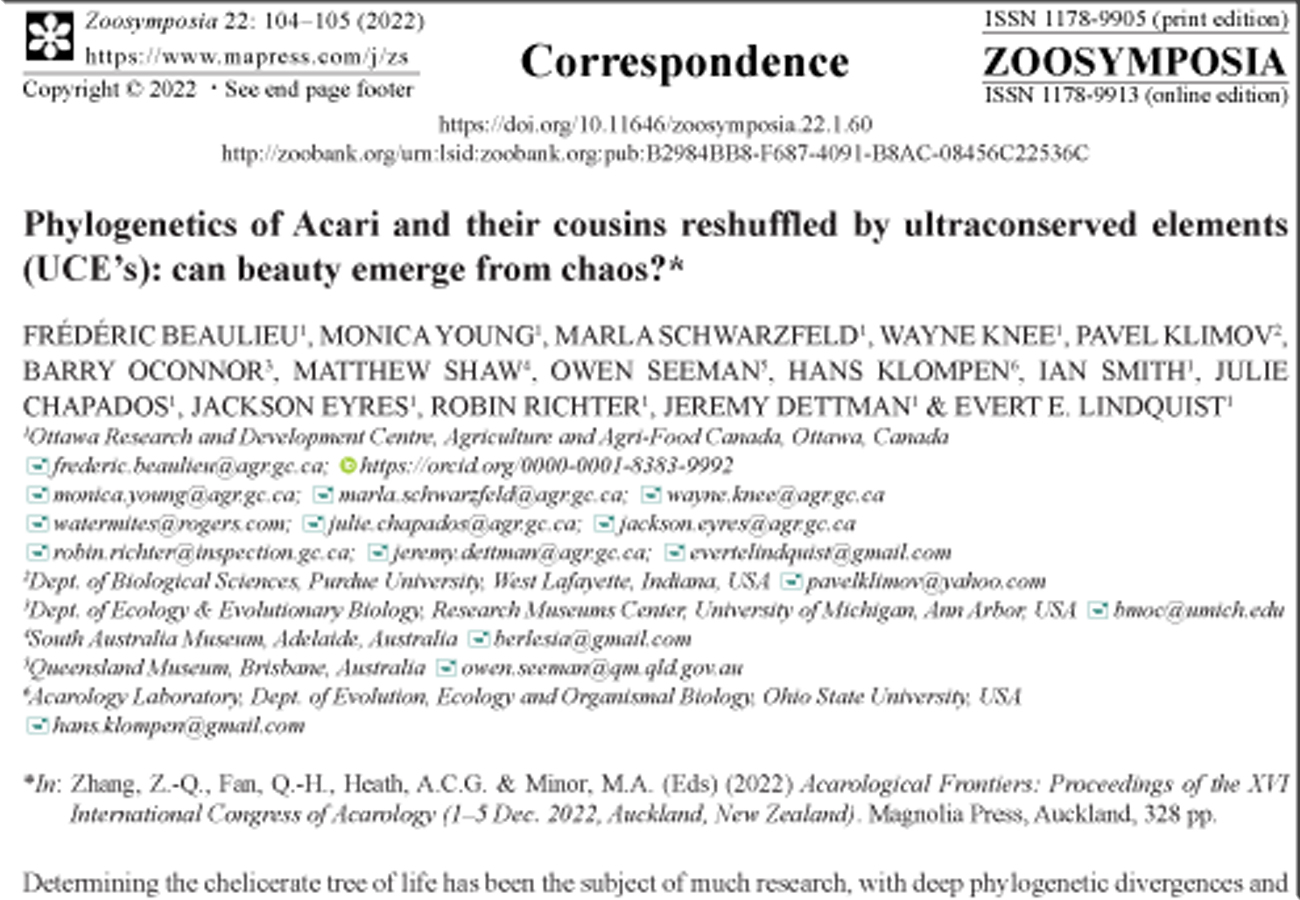Abstract
Determining the chelicerate tree of life has been the subject of much research, with deep phylogenetic divergences and high evolutionary rates complicating both morphological and molecular approaches (Noah et al., 2020; Ontano et al., 2021; Sharma et al., 2021; Ballesteros et al., 2022). Within Acari, similar challenges exist—even the basic question of whether Acari is mono- or diphyletic remains unresolved (Pepato & Klimov, 2015; Lozano-Fernandez et al., 2019; Van Dam et al., 2019; Ontano et al., 2021). Several recent molecular studies have attempted to resolve these issues using large multi-gene datasets (Pepato et al., 2022; Klimov et al., 2018), mitochondrial genomes (Ban et al., 2022), and transcriptomes (Lozano-Fernandez et al., 2019). Ultraconserved elements (Faircloth et al., 2012) have recently shown great promise for constructing phylogenies for both deeply- and shallowly-diverged taxa (Zhang et al., 2019), including for Chelicerata (Starrett et al., 2017) and for Arrenuridae within Acari (Shoop, 2019), but have not yet been used across the Acari.
References
-


